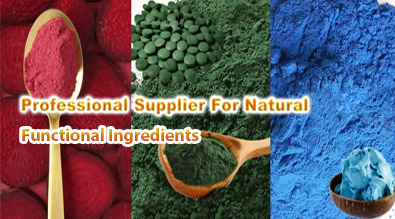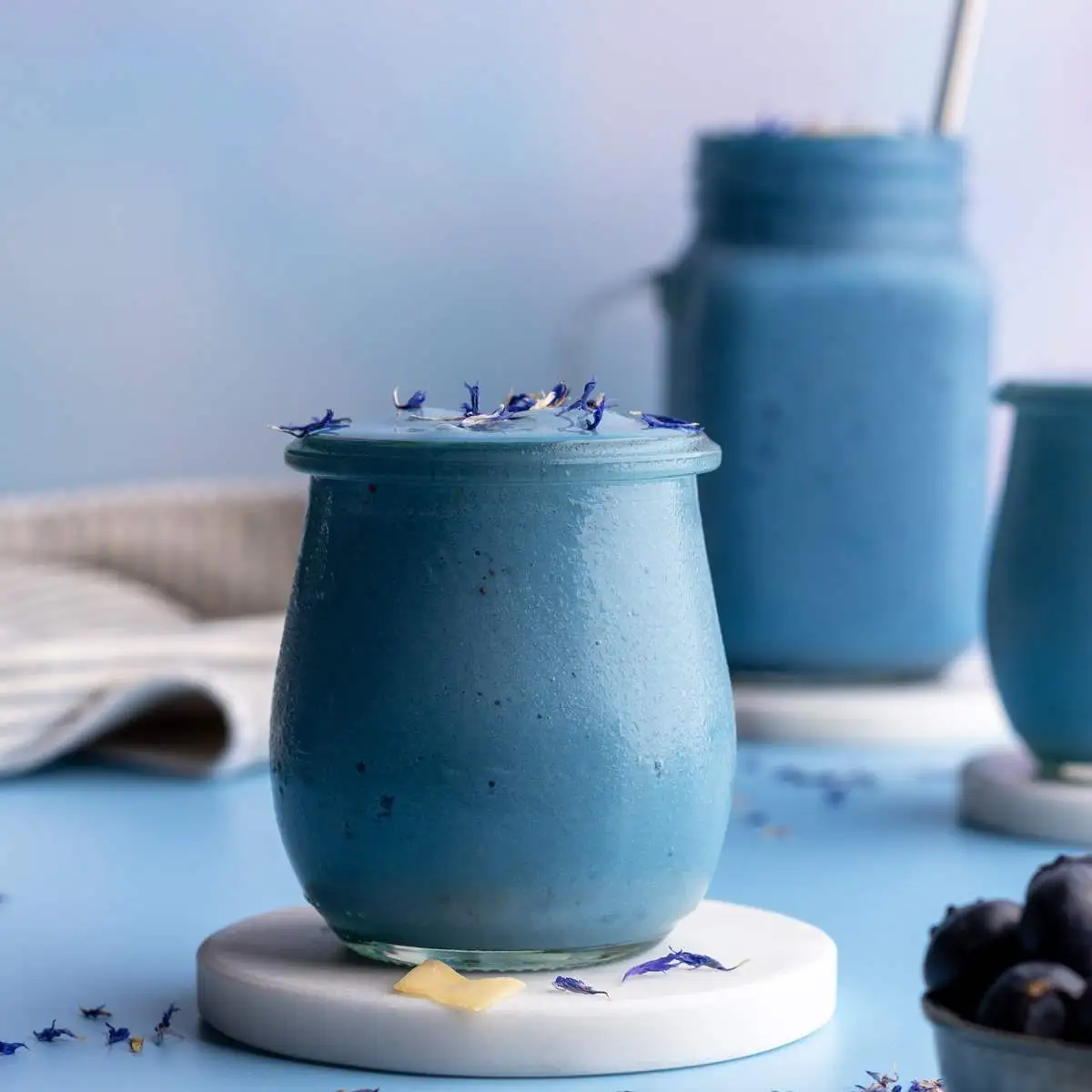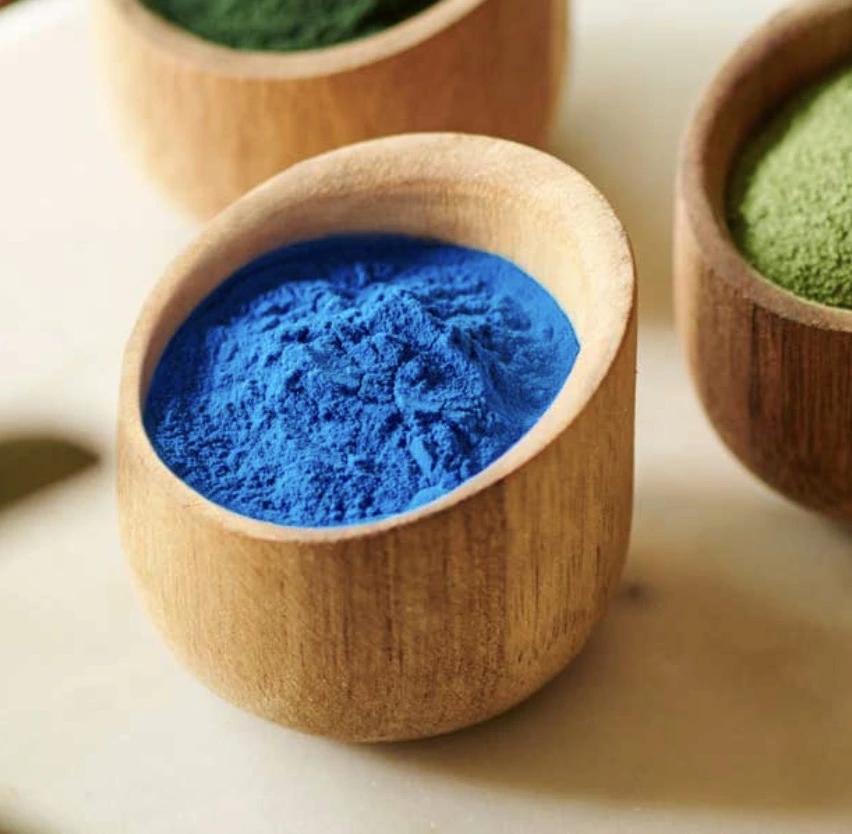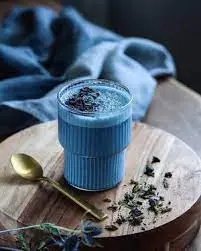Why do people eat blue spirulina?
Blue spirulina has been gaining popularity as a superfood in recent years. This vibrant blue powder, derived from the blue-green algae Arthrospira platensis, is packed with nutrients and potential health benefits. In this article, we'll explore the reasons behind the growing trend of consuming blue spirulina powder and how you can incorporate it into your diet.

Top 5 Benefits of Blue Spirulina Powder
Blue spirulina, also known as phycocyanin E10 or phycocyanin spirulina, offers a range of health benefits that make it an attractive dietary supplement. Let's delve into the top five reasons why people are adding this azure powder to their daily routines:
Powerful Antioxidant Properties
The striking blue color of spirulina comes from phycocyanin, a potent antioxidant compound. This pigment-protein complex helps combat oxidative stress in the body, potentially reducing inflammation and protecting cells from damage caused by free radicals. Regular consumption of blue spirulina may contribute to overall health and longevity.
Immune System Support
Blue spirulina is rich in nutrients that can bolster the immune system. Its high content of vitamins, minerals, and antioxidants helps stimulate the production and activity of white blood cells, enhancing the body's natural defense mechanisms against infections and diseases.
Potential Anti-Cancer Properties
Emerging research suggests that phycocyanin, the main component of blue spirulina, may have anti-cancer properties. While more studies are needed, preliminary findings indicate that this compound could inhibit the growth of certain cancer cells and promote apoptosis (programmed cell death) in tumor cells.
Natural Energy Boost
Many people turn to blue spirulina powder as a natural energy enhancer. Unlike caffeine, which can lead to jitters and crashes, blue spirulina provides a steady source of energy due to its nutrient-dense composition. It's particularly rich in B-vitamins, which play a crucial role in energy metabolism.
Detoxification Support
Blue spirulina may aid in the body's natural detoxification processes. Its antioxidant properties help neutralize harmful toxins, while its nutrient profile supports liver function - the body's primary detoxification organ. This makes it a popular choice for those looking to cleanse their systems naturally.

How to Use Blue Spirulina Powder in Recipes?
Incorporating blue spirulina into your diet can be both fun and delicious. Here are some creative ways to use this versatile powder:
Smoothies and Smoothie Bowls
One of the most popular ways to consume blue spirulina is in smoothies. Its mild taste blends well with fruits and vegetables, while its vibrant color creates visually stunning drinks. Try mixing it with banana, pineapple, and coconut milk for a tropical blue smoothie bowl.
Baked Goods
Add a twist to your baking by incorporating blue spirulina into cakes, cookies, or muffins. Not only will it provide a unique color, but it will also boost the nutritional value of your treats. Blue spirulina pancakes or waffles can make for an exciting breakfast option.
Lattes and Drinks
Create eye-catching, Instagram-worthy drinks by adding blue spirulina, like Phycocyanin E10, to your lattes, lemonades, or cocktails. A blue spirulina latte made with plant-based milk and sweetened with honey can be a soothing and nutritious beverage, offering a vibrant color boost along with its health benefits.
Energy Balls and Bars
Boost the nutritional profile of homemade energy balls or bars by adding blue spirulina powder. Mix it with dates, nuts, and seeds for a quick, healthy snack that's perfect for on-the-go energy.
Yogurt and Chia Puddings
Stir blue spirulina into yogurt or chia puddings for a colorful and nutritious breakfast or dessert. Top with fresh fruits and granola for added texture and flavor.

Is Blue Spirulina Powder Safe for Daily Use?
While blue spirulina is generally considered safe for most people, it's important to consider a few factors before incorporating it into your daily routine:
Quality and Purity
The safety of blue spirulina largely depends on its quality and purity. Always purchase from reputable sources that provide third-party testing results. This ensures that the product is free from contaminants such as heavy metals or harmful bacteria.
Dosage Considerations
As with any supplement, moderation is key. While there's no universally established dosage, most manufacturers recommend starting with 1-3 grams per day. It's advisable to begin with a smaller amount and gradually increase to assess your tolerance.
Potential Interactions
Phycocyanin spirulina may interact with certain medications, particularly immunosuppressants and anticoagulants. If you're taking any medications or have pre-existing health conditions, it's crucial to consult with a healthcare professional before adding blue spirulina to your daily regimen.
Allergic Reactions
While rare, some individuals may experience allergic reactions to blue spirulina. If you have a history of allergies, especially to seafood or algae, exercise caution and consult with an allergist before use.
Pregnancy and Breastfeeding
There's limited research on the safety of blue spirulina during pregnancy and breastfeeding. It's best to err on the side of caution and avoid use during these periods unless under the guidance of a healthcare provider.

Conclusion
In conclusion, blue spirulina powder offers a myriad of potential health benefits and can be a colorful, nutritious addition to your diet. Its versatility in recipes makes it easy to incorporate into various dishes and beverages. While generally safe for daily use, it's important to source high-quality products and consider individual health factors. As with any dietary change, it's always wise to consult with a healthcare professional, especially if you have pre-existing conditions or are taking medications.
If you're interested in learning more about blue spirulina or other natural plant extracts, don't hesitate to contact us at info@yanggebiotech.com. Our team of experts is always ready to provide more information and assist you in finding the right products for your needs.
References
1. Johnson, M. et al. (2021). "The Nutritional and Health Benefits of Blue Spirulina: A Comprehensive Review." Journal of Functional Foods, 78, 104375.
2. Smith, A. R., & Brown, L. K. (2020). "Phycocyanin from Blue-Green Algae: Potential Applications in Human Health and Nutrition." Nutrients, 12(9), 2734.
3. Chen, H. W., et al. (2019). "Antioxidant and Anti-Inflammatory Properties of C-Phycocyanin from Blue-Green Algae." Journal of Agricultural and Food Chemistry, 67(4), 1257-1265.
4. Thompson, S. L., & Gershwin, M. E. (2018). "The Effects of Blue-Green Algae on Human Health: A Systematic Review." Journal of Medicinal Food, 21(7), 665-676.
5. Williams, R. D., & Parker, J. T. (2022). "Safety and Efficacy of Blue Spirulina Supplementation: Current Evidence and Future Directions." Critical Reviews in Food Science and Nutrition, 62(5), 1289-1302.

Based on your location and order quantity, you will have the opportunity to receive a limited time free shipping promotion!

Who we are


